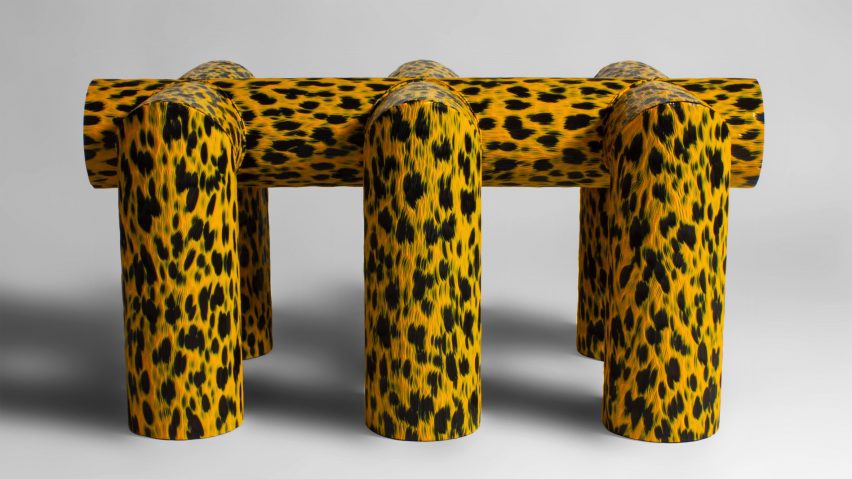
Rik van Veen transforms old gas pipes into spotted Leopard bench
Dutch designer Rik van Veen has created a bench made from leftover plastic pipes that are fused together and carved to create a textural pattern reminiscent of a leopard's fur.
The Leopard bench is the latest in a series of experimental furniture pieces that Van Veen began producing a decade ago during his studies at the Willem de Kooning Academy in Rotterdam.
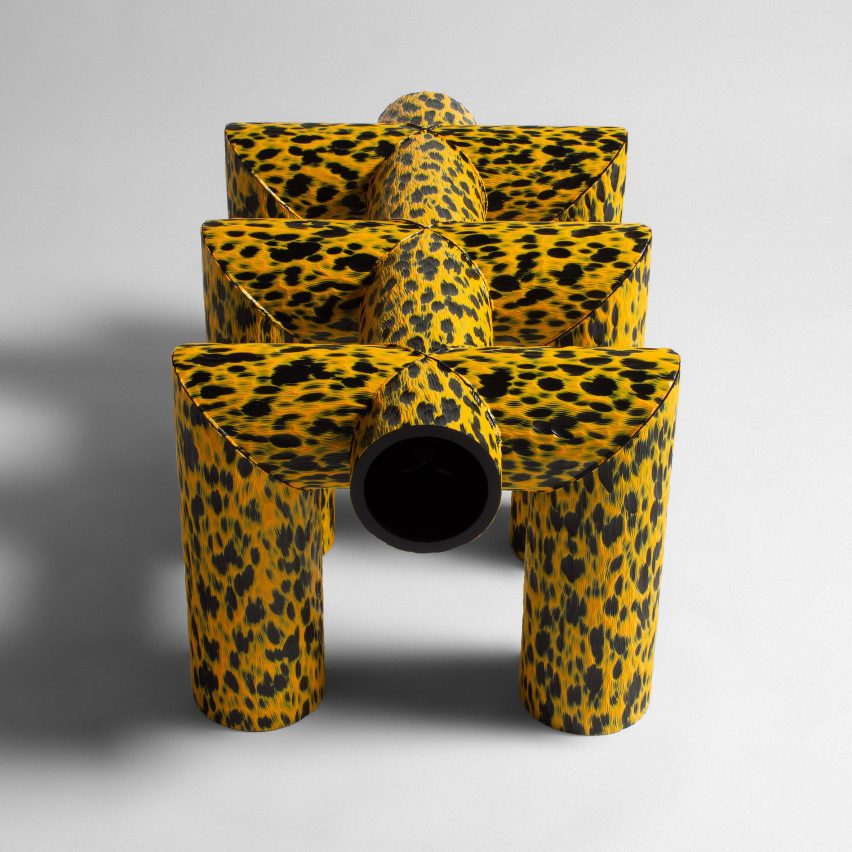
The furniture is mostly made using leftover pieces of gas or water pipes collected from building sites in the neighbourhood around Van Veen's studio.
Inspired by the craft of heat-fusing tubular plastic beads, the designer's early designs examined how this process could be applied at a furniture scale.
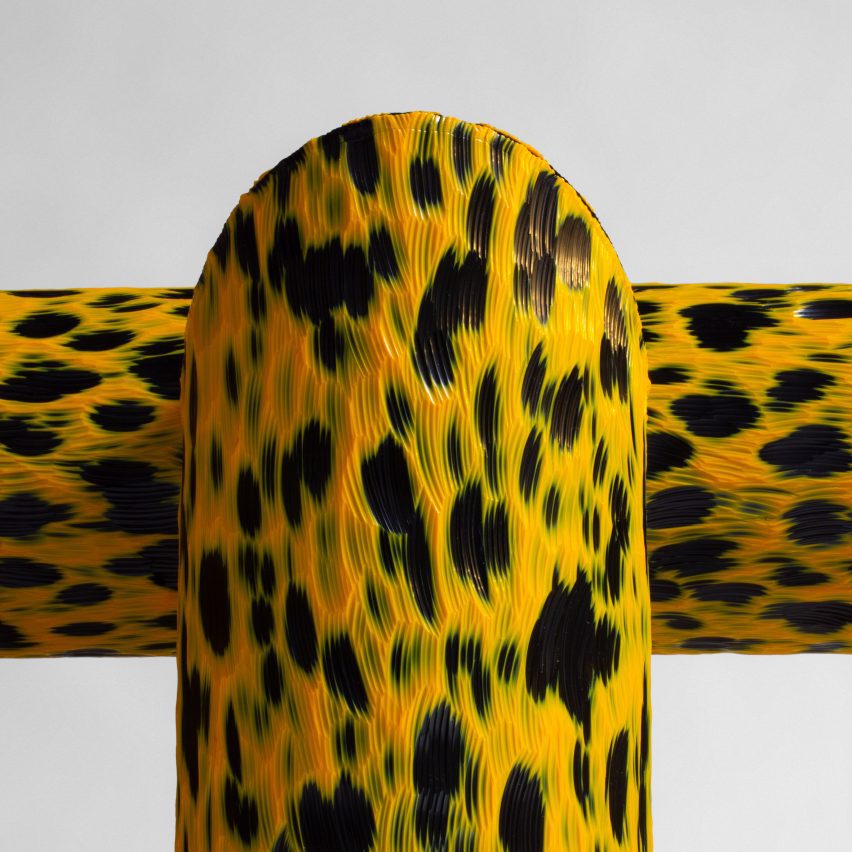
To join the pieces together, Van Veen uses a hot plate to heat the two ends until the plastic softens. The parts are then pressed together to form a strong joint when the material hardens.
"The most challenging aspect is aligning the pieces when making the joint," the designer told Dezeen.
"I use jigs for cutting angles and have even built a custom machine for the joining process, but it remains tricky every time."
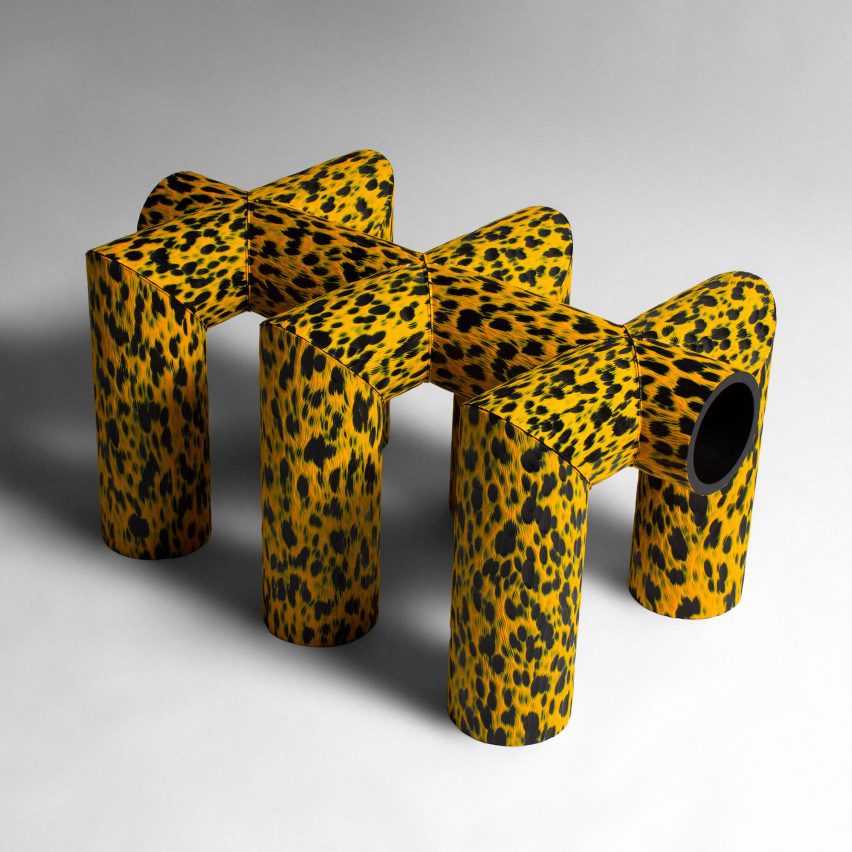
The pipes Van Veen sources are intended for underground use, so are typically treated quite roughly in transit and during installation.
This results in scratches on the surface that are unsightly when the material is used for interior products.
To address the issues caused by the scratches, Van Veen conducted various experiments using power tools to carve into the surface of the pipes.
The pattern that gives the Leopard bench its name is produced using an angle grinder fitted with a carving disc. Gouges cut into the yellow surface reveal the black layer underneath, creating a fur-like texture.
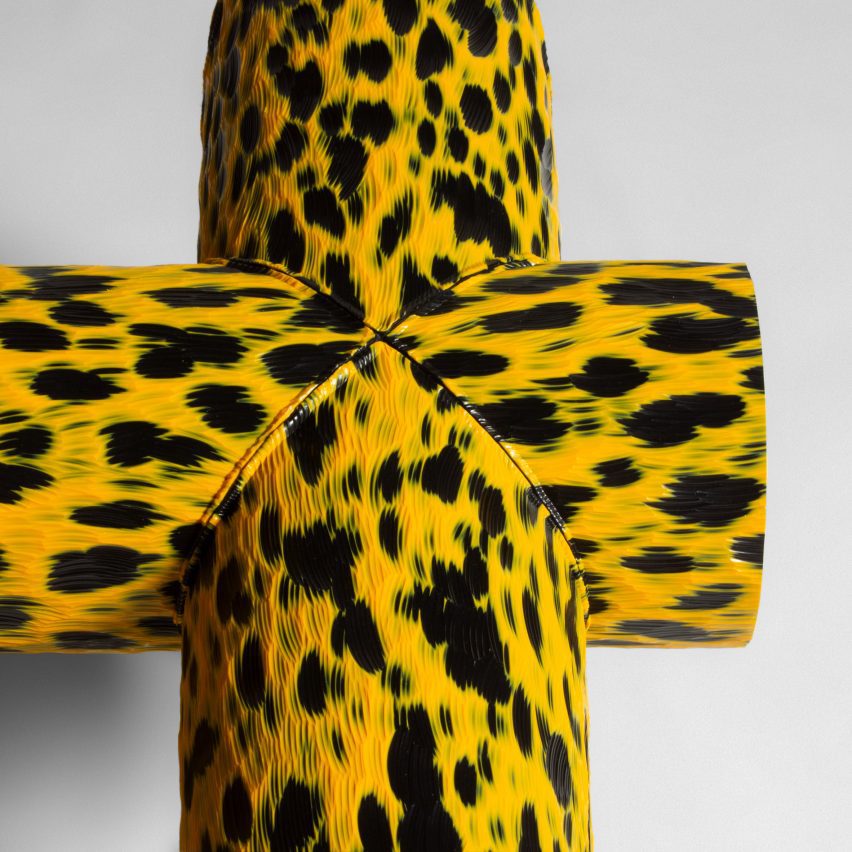
Van Veen described the Leopard bench as "the ultimate outcome of years of experimenting with plastic pipe", as it brings together many of the ideas and techniques he has developed over that period.
"What I love about working with this material is that it's actually not waste at all," Van Veen said. "Plastic can be processed and reshaped into new forms over and over again."
The pipes are made from high density polyethylene plastic, which has a low melting point and can be fused to create joints that retain the same properties as the base material.
"I love the idea of furniture being just one big piece of material," said Van Veen. "Heat fusion allows me to connect plastic pieces together without the need for additional materials or fasteners."
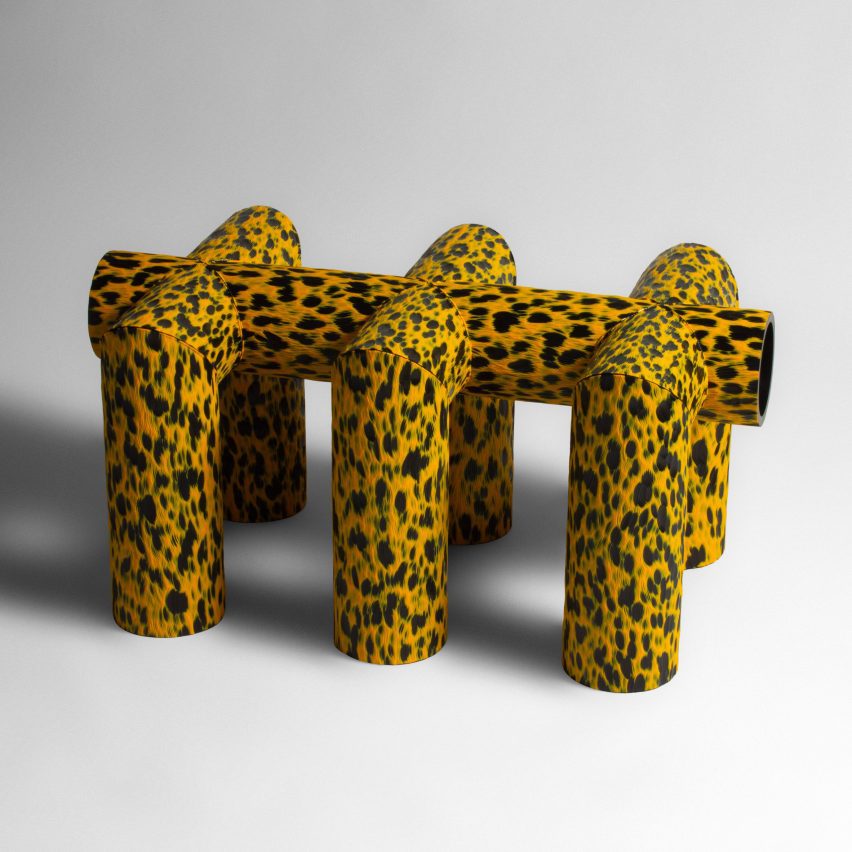
The Leopard bench is part of the HDPE collection, which was begun in 2021.
It comprises stools, chairs and benches made by fusing large-diameter pipes that are precisely cut and bonded to form sturdy seating structures.
The photography is courtesy of Rik van Veen.
The Leopard bench is a one-off piece that will be exhibited as part of the Pass the Dutch exhibition at the MOYA museum in Oosterhout, Netherlands, from 22 September to 17 November 2024. See Dezeen Events Guide for an up-to-date list of architecture and design events taking place around the world.